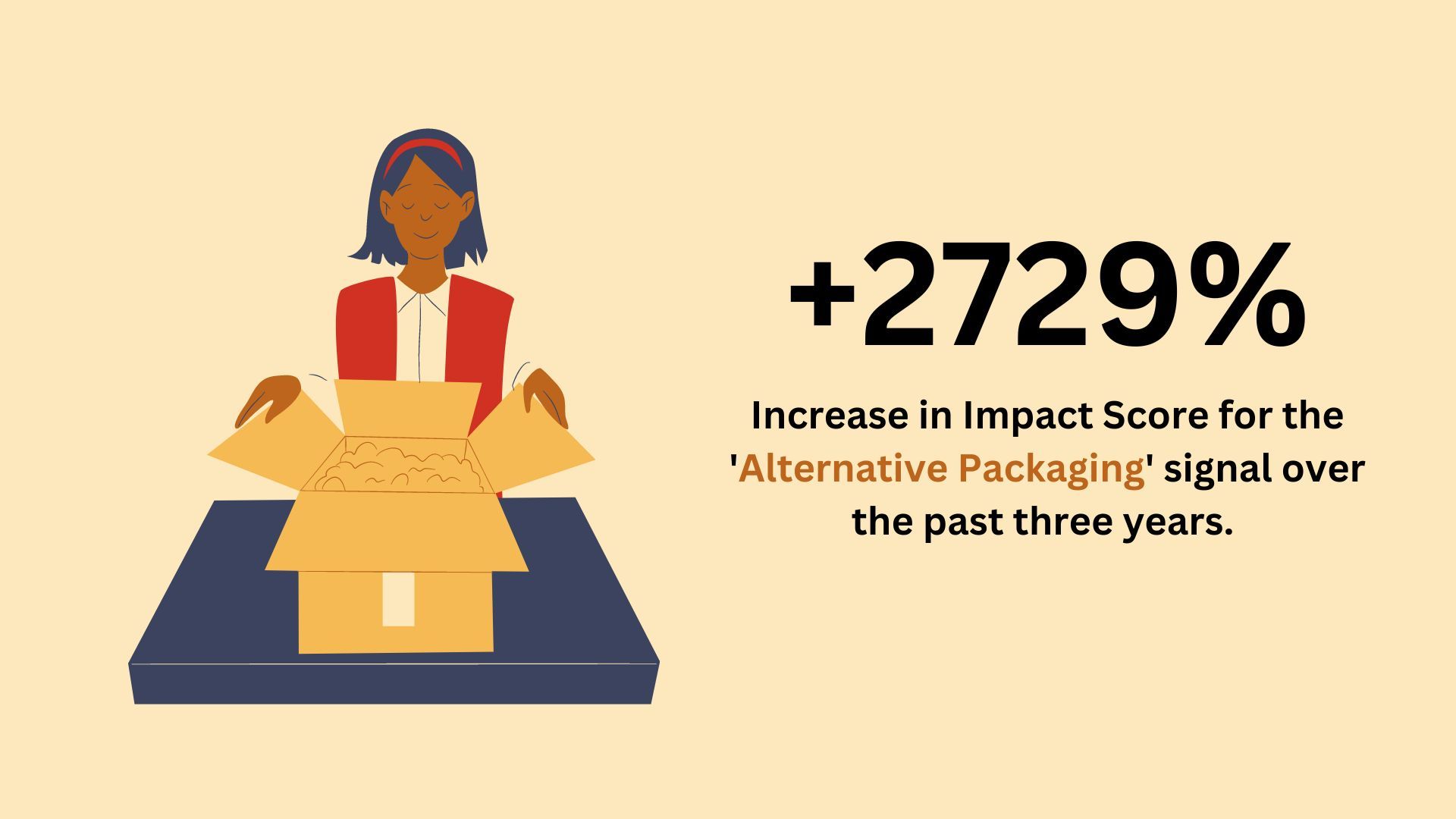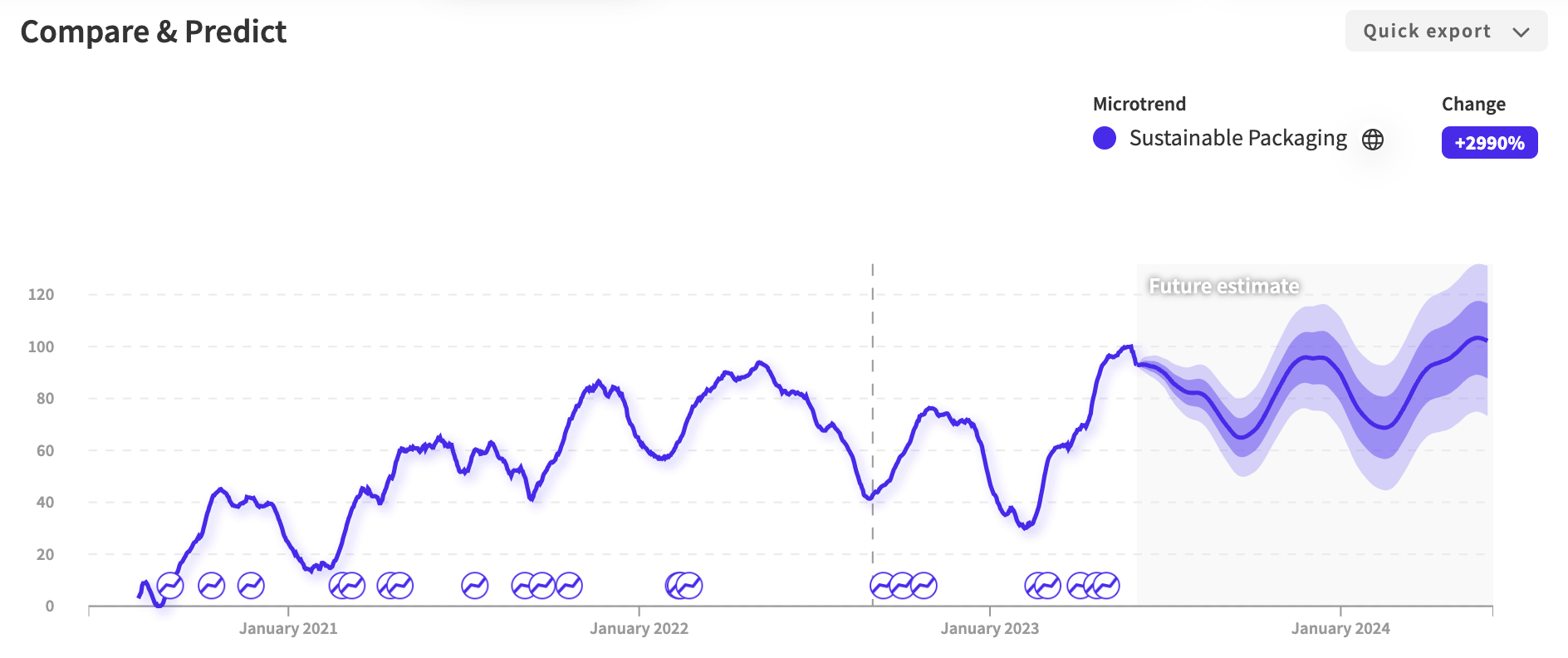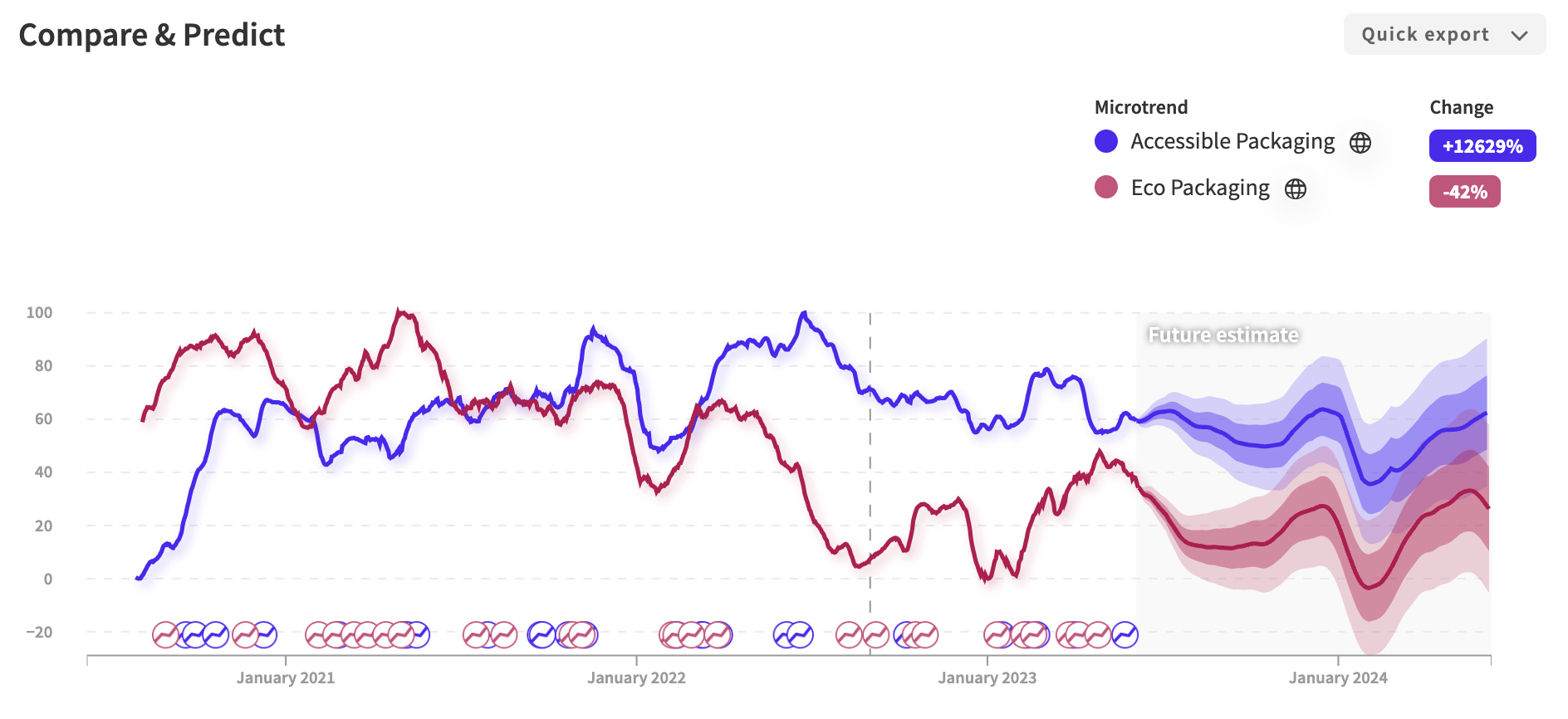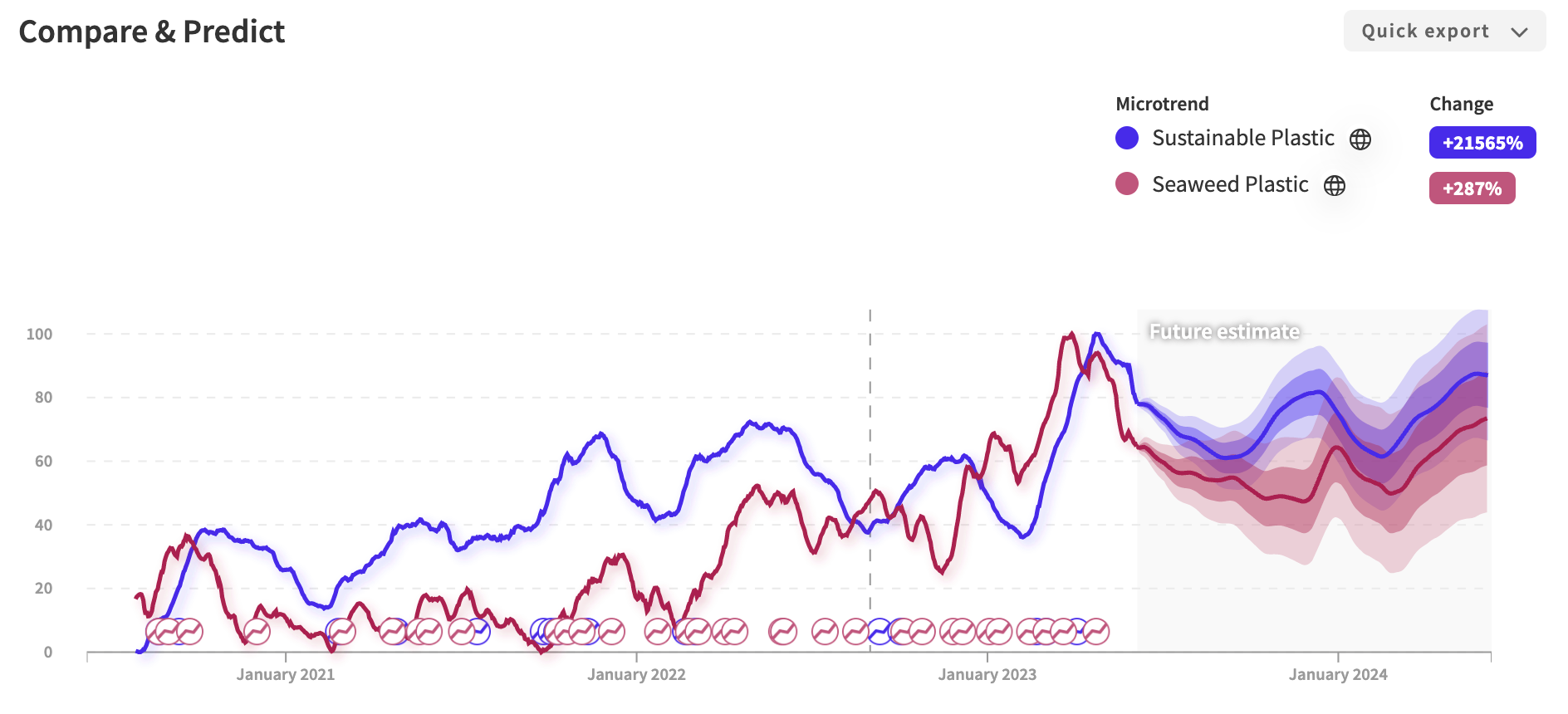Hello Forecasters,
Welcome back to the Inflection Point. The newsletter tracking 100 million consumer signals to predict cultural shifts relevant to you.
This week we’re covering ‘Alternative Packaging’
TLDR;
- A global UN plastics pollution treaty is currently under negotiation.
- Walmart announced it's swapping out plastic mailers for recyclable ones.
- A company used biotech to get every last bit of your toothpaste from its packaging, and it's freakin awesome!
- Seaweed plastics are winning innovation prizes from iconic brands like Tom Ford and Esteé Lauder.
Let's dive in.

Packaging. It’s one of the inescapable parts of life
But it’s not until packaging doesn't make sense that we actually stop to think about it. Ever received a tiny product in an enormous box and thought, "Why'? What about struggling to get that last bit of ketchup from the bottle?
I think we've all been there.
So why are big brands and biotech companies finally addressing these issues?
eCommerce sales are booming
In 2020 Walmart’s online sales rose by 79%. Today, it’s the second-largest online retailer in the U.S., seeing 13% of its total revenue from digital sales. $80 Billion, to be exact.
And with more shipments comes more packaging.
Last week Walmart announced:
- It’s swapping out plastic home delivery mailers for recyclable paper ones. It’s expected to eliminate 2,000 tons of plastic from circulating the U.S. by the end of January.
- Half of its fulfillment centers will now use 'made-to-fit' technology. Ensuring boxes are proportionate to product size.
- And by the end of the year, Walmart consumers can skip plastic altogether for curbside pickup.
Using more paper mailers means less box-making and labor costs. Smaller boxes for smaller items mean more products fit on each truckload.
Walmart is killing two birds with one stone.
Saving money and making more sustainable choices
Target and Amazon have made similar changes.
- Amazon is incentivizing single-box shipments.
- Target has replaced bubble wrap with recycled paper cushioning.
- They’re also piloting returnable bags.

And although the NWO.ai signal for sustainable packaging is growing. According to McKinsey, environmental impact is last on the list of consumer concerns related to packaging.
Consumers care more about ease of use, appearance, and hygiene.
Do consumers want sustainably packaged products? Yes, but they want better design and convenience too
Kara Buckley, head of global grooming communication at P&G, told the WSJ:
“Consumers would go right to, ‘your packaging is so plastic,’ and then usually in the next breath they would say, ‘and it’s so hard to open."
Think about how difficult those hard plastic-wrapped Gillette razors used to be. P&G has phased those out. Replacing them with simple-to-open cardboard packaging.
Accessible Packaging
While a few consumers may think about the material life cycle of a package. Everyone notices when packaging is a total pain.
On a psychological level, climate-friendly packaging addresses issues that are far away and out of sight by the consumer. Landfills, for example. But accessible packaging, easy for blind people or safe for children, is something people can relate to in an immediate and tangible way.
So while sustainable packaging IS a preference for consumers. Accessibility is far more important. Below is the comparison for the signals ‘accessible packaging’ and ‘eco-packaging.’

So where are packaging trends moving?
Major retailers are preparing themselves for a world stricter on plastic.
The European Union has a new law restricting single-use plastic. The global UN Plastics Treaty is also under current draft development. Although the oil industry will do everything possible to prevent this, companies are wise to be preemptive.
The below NWO.ai signal shows the growing consumer interest in the UN Plastic Pollution Treaty.

Package innovation lies in Sustainable Plastics
In 2020 Tom Ford launched the 1.2 M Plastic Innovation Prize. The Esteé Lauder Companies and Trousdale Ventures sponsored it.
In March 2023, they announced the three winners:
The common theme? Using seaweed as a plastic alternative.
Tom Ford Beauty’s next innovation accelerator, themed #UnwrapTheFuture, will be announced later this month.

Biotech is the answer
Another company revolutionizing the industry is Liquiglide.
They're solving that problem we've all encountered: products stuck inside their packaging. Cleverly named 'every last drop,' this technology does precisely that.
Think:
- Mayo
- Lotions
- Face creams
- Conditioners
- Peanut butter
- Toothpaste tubes
You get the point. You can check out their video here. It's remarkable.
Does this innovation cut down on waste? Yes, but consumers value ease of use over waste efficiency any day.
Who can benefit from packaging innovation?
Big brands that can afford to invest in packaging innovation stand to:
- save money
- minimize waste
- appeal to their consumer preferences
The Takeaway:
Brands can appeal more to their consumers by focusing on the ease of use of their packaging rather than their sustainable qualities.
Those who don't make packaging changes will lose a competitive advantage in a world shifting away from plastics.
That’s all we’ve got for now.
Thanks for spending time with us on this week’s Inflection Point.
Did we spark your interest? Subscribe below or reach out to us. We’d love to hear from you!